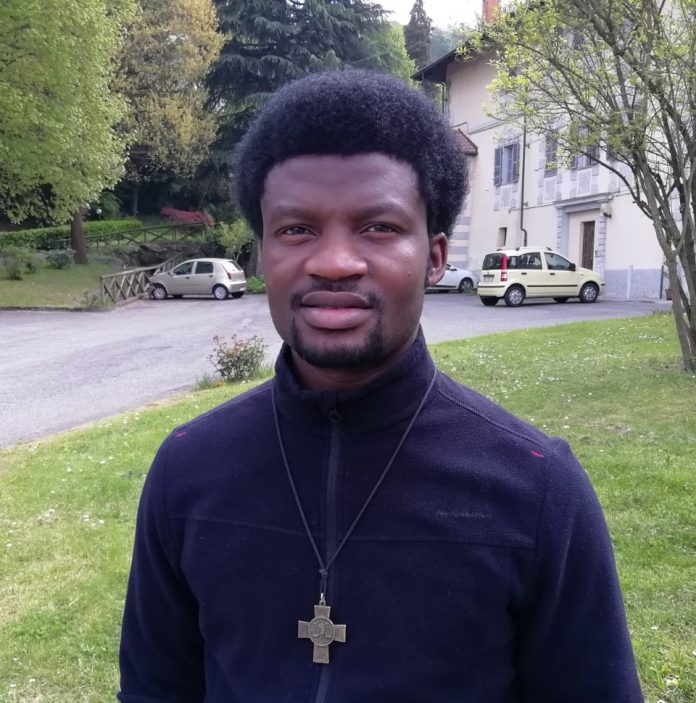
ABSTRACT
The nature of intelligence, the owner of intelligence, and the purpose of intelligence have been one of the controversial issues since antiquity but more in Contemporary Scholarship. The term ‘Artificial Intelligence’ abbreviated as (AI) has probably been heard of by most people, but only a few people have a clear understanding of what it is. AI is the field of inquiry that studies the ability to create an intelligent machine to act like a man. AI continues to show its interest in humans as it engages in studies and simulations of human intelligence to produce machines acting like humans. This concern with human beings makes it a philosophical price. I shall critically analyse the Philosophical consequences of Artificial Intelligence by drawing on the theory of embodiment of Hubert Dreyfus.
Olatunde Felix OLAMIDE, B.A (Phil.), Licentiate (Phil.), olamidefelix@gmail.com
Artificial Intelligence: The Future of Man or Man of the Future, A philosophical Analysis
Introduction
It is said that man is a bundle of intelligence which is visible in his ability to know and understand things, and at the same time, differentiate him from other creatures. Artificial Intelligence, on the other hand, is the art of making machines intelligent like humans. The aim of this work is not to condemn AI in its totality but to draw some limitations of AI. To do this, I shall begin by giving a brief, yet concise exploration of the history of Artificial intelligence, its definitions, and its founding fathers. Then I shall critically analyze some philosophical consequences of Artificial Intelligence. The conclusion of the work will be to draw on the theory of embodiment of Hubert Dreyfus as a philosophical limitation of AI, and as a necessary tool if and only if the intelligent machine is to be considered as humans.
1. History, Definition, and founding fathers of Artificial Intelligence
The history of artificial intelligence could be traced back to the ancient Greek mythologies, stories, and artwork, which depict artificial beings as ‘beings’ endowed with intelligence. This made Pamela McCorduck say that Artificial Intelligence began with “an ancient wish to forge the gods.”[1] Artificial intelligence can be seen for instance in the form of golden robotsof Hephaestus and Pygmalion’s Galatea.[2] It permeated through the Middle Ages manifesting itself in the form of secret mystical or all chemical meansof placing mind into matter, such as Jabir Ibn Hayyan’s Takwin, Paracelsus’homunculus, and rabbi Judah Loew’s Golen[3]
Artificial intelligence as it is known now took its ground between1943 and 1956 with the combination of scientists from different fields of studies like Mathematics, Psychology, Engineering, Economics, and Political Science. They began to discuss the possibility of creating an artificial brain. It came to be known as an academic discipline in 1956.
Artificial Intelligence is defined as “the science of intelligence in general or more accurately, as the intellectual core of cognitive science.”[4] It is also referred to as the science of simulating human intelligence where is understood “as the ability to adapt, to shape and select environment.”[5] It has two main aims. First, to make machines smarter, this is its primary goal, while the second aim is to understand what intelligence is and to make machines more useful.[6] The aims were made known by the founding fathers namely: John McCarthy, Alan Turing, and Marvin Minsky.
John McCarthy (1927 – 2011) was a professor of computer science and a trained mathematician of the 20th/ 21stcentury. He was noted to be the one that coined the term artificial intelligence in the 1956 Dartmouth Conference when he proposed and called for a Summer Research Project on Artificial intelligence saying that “an attempt will be made to find how to make machines use language; form abstractions and concepts, solve kinds of problems now reserved for humans and improve themselves”[7] McCarthy’s main thought in artificial intelligence was the relationship between language and intelligence. He concluded the proposal saying that “for the present, the artificial intelligence problem is taken to be that of making a machine behave in ways that would be called intelligent if humans were so behaving.”[8]
Another notable figure in the foundation of AI was Marvin Minsky, born on 9thAugust 1927, and a contemporary of McCarthy in New York City, U.S.A. In one of his works, “A-Frame Work for Representing Knowledge” (1974) Minsky defined a frame “as a data structure for representing a stereotyped situation like being in a certain kind of living room, or going to a child’s birthday.”[9] In this work, Minsky discussed artificial intelligence and human problem solving, together with the default assignment, relating them to language structure, and different scenarios. Alan Mathison Turing, the last of the founders, was born on 23rdJune 1912. He made a lot of contributions to the field of Artificial Intelligence through one of his main works “Computing Machinery and Intelligence” (1950) which later came to be known as the Turing Testor the Imitation Game. As an early exponent of Artificial Intelligence, Turing thought like other scholars in his field that the “human brain is in effect a digital computer.”[10] Turing proposed that the Turing Testshould be used as a criterion to determine whether machines can think. One of his major works “The Essential Turing Test” (2004) collects together for the first time the senses of five papers that Turing devoted exclusively to Artificial Intelligence analyzing the question “Can machines think?”[11]
2. Philosophical Consequences of AI
In this part of the article, I would like to identify some consequences of Artificial Intelligence. In doing this, I would discuss the epistemological, anthropological, social, and ethical implications that await man in the future if the production of intelligent machines is not done with caution.
Epistemological-Anthropological Implications of Artificial Intelligence
Epistemology is one of the major branches of philosophy that is concerned with the analysis, discourse, and theory of knowledge. Epistemology concerns itself with the concept of knowledge as a whole and not as a particular one. Since epistemology is concerned with what we know, and how it could be justified, it tries to answer questions like: What is knowledge, what can we know? How do we know that we know? Here, we are going to discuss three main sub-areas. They are Reason, Perception, and Technology. The reason will lead us to the school of thought of rationalism, perception of empiricism, and technology to the field of scientific knowledge. Each of these areas of knowledge tries to respond to the fundamental epistemological questions of AI. These questions are: What knowledge is required in any aspect of thinking? How is the knowledge represented? How is this knowledge used?
One of the characteristics of man central to epistemology and anthropology is man’s rationality. Through his reason, man can know some things about himself and some other things about what surrounds him. In epistemology, the branch that stresses the importance of man’s reason and its application in acquiring knowledge is rationalism. Rationalism can be defined as a school of thought that states that what we come to know and the justification of our knowledge is through our reason. For the rationalists, only a priori (before experience) knowledge is required in any aspect of thinking. This kind of knowledge should be represented through reasoning without making any recourse to sense data. Rationalism especially as seen in Descartes’ system presents scientific inquiry as a pure systematic exploratory discourse. This kind of method when properly analyzed is seen to be heuristic and formal in style.
Similarly, the role of perceptions in human knowledge cannot be under-estimated. Through the use of our senses, we come to perceive phenomena through which we gain some knowledge. Unlike rationalism, empiricism is a school of thought that emphasizes the experience. For the empiricists, the justification of our knowledge, what we come to know, and how it should be used, are found in the five senses. According to the empiricists, for us to know anything, our knowledge must be based on perception. Knowledge gained through experience is called a posteriori(after experience).
The relationship between science and technology is so great that the two are indispensable. While science continues to flourish through technological advancement, technology finds its roots in scientific discoveries. Technology has shaped man’s attitude towards nature. Through technology, man has been able to know himself better especially in matters of compositions and what makes him a human person. Scientific knowledge combined the use of reason stressed by the rationalists and the use of senses held by the empiricists to unravel the covert aspects of man and nature
Applying all these to our work, we realize that AI as it is known now came about as a result of development in technology, especially in the building and perfection of computer technology. The configuration of a computer as a material and a physical device that is perceptible through senses shows that it works in a heuristic, formal, and mechanistic way. Philosophical Anthropology, on the other hand, makes us understand that humans’ responses to the above epistemological questions are not only by reason as in the case of rationalism or by senses as in the case of empiricism, or verifiable and empirically justifiable in a laboratory as in the case of science and technology, but in the holistic combination of all these spheres of knowledge, including metaphysical knowledge. Any attempt to limit human knowledge to rationalism, empiricism, or scientific knowledge alone, will lead to some philosophical implications such as formalism, materialism, and reductionism.
Hubert and Stuart Dreyfus in their book, Mind over Machines(1986) differentiate between the ‘knowing–how’ ability of skill acquisition and the ‘knowing-that’. ‘Knowing-how’ is the ability to perform a skill without making any recourse to the application of logical rules. In another sense, it does not require using conscious abstract rules. ‘Knowing that’ on the other hand, is a logical puzzle requiring the application of logical rules.[12] For them, skill acquisition ranges from “rule guided – knowing that to experience-based knowing-how”.[13] They concluded their argument however by stating that intelligent machines acquire knowledge by rule-guiding which is known as “knowing – that”; while humans combine both “know-how” and “know–that” to achieve a holistic acquisition of knowledge.
Ethical-Social Implication
Following what has been said so far, we cannot but at this juncture identify some ethical implications of AI. Our sense of ethics is not just to evaluate the morality behind AI, but to suggest some cautions in their operation. Dreyfus’ argument that there are limits to what machines can do calls for the ethical evaluation of AI. To show these limits of AI, I shall do so by evaluating the personal relationship with the self (I), the interpersonal relationship with the other(I–THOU), and the relationship with the society in general (WE).
With the increase in the development of AI especially in robotics, the knowledge of the self helps in the critical examination and understanding of oneself. Man needs to constantly reflect on the things within him that he knows, but which are unknown to others. His self-attitudes and reflections will lead him to know who he is. If AI succeeds in building intelligent machines as understood in the human sense, then it means the human person will lose the touch with himself and find himself as being enslaved into the world of gadgets and his privacy, which helps him in his self-determination will be intruded upon.
Talking about the other person, different philosophers have written and discussed on their conception of the ‘other’. While some see the ‘other’ as a threat that limits one’s freedom, some see the ‘other’ as a necessary companion. Being a social being, man cannot but relate with the other person because the “I-Thou relationships are characterized by total involvement and participation of the whole self. It involves the direct apprehension and concern for the other person as an end in himself.”[14] The development of technology on which AI works, through the use of computers, has brain-washed some persons to the extent that their authenticity has been displaced into superficiality and as such, not seeing the relationship with fellow humans as an obligation. If robots are being built with full intelligence, what will be their relationship with a man? What will be the level of communication, love, emotions? Won’t it be that the other will be seen as ‘it’ and not as ‘thou?’
The societal or social consequences of placing our future into the hands of machines can be described in terms of Man-Machine exchange, Dehumanization, Threat to life and human dignity, Violence, Criminality, Marginalization, etc. The present situation of technological growth if not properly checked, could lead to man-machine exchange. This means that human beings would simply be used as machines-tools and will cease being subjects, but become objects. The spontaneity with which humans work will vanish and rigidity will take place. The ethical dilemma here is that the human race will vanish and humanity will lose his authenticity to superficiality. Furthermore, the ability of intelligent machines to take over our jobs and to do some other human functions will lead to idleness on the part of humans and that could lead to a lot of criminal acts such as robbery, marginalization, and suicide because humanity would have lost the essence of being human. The humanness of man is found in the cultural values of family, persons, and interpersonal relationships. The essence of all the community inhabitants is seen in their sense of belonging and brotherhood, the sacredness of life, and communal responsibility for the care of one another and creation.
3. Hubert Dreyfus and the theory of Embodiment
Hubert Lederer Dreyfus (1929 – 2017) was born in Terre Haute. He was a well-known critic of Artificial Intelligence because of the philosophical implications he drew from it. His Theory of Embodiment could be found in his famous book, “What Computers still can’t do: The limit of Artificial Intelligence” where he had traced the history and achievements of AI researchers and consequently had exposed the four misconceived assumptions on which their hypotheses were based. This Dreyfusian theory of embodiment focuses on three basic areas that were not of interest or rather were of less interest for AI researchers. As Dreyfus puts it:
We shall explore three areas necessarily neglected in Cognitive Simulation and Artificial Intelligence, but which seem to underlie all intelligent behavior: the role of the body in organizing and unifying our experience of objects, the role of the situation in providing a background against which behavior can be orderly without being rule-like, and finally the role of human purposes and needs in organizing the situation so that objects are recognized as relevant and accessible.[15]
Dreyfus aimed to show to his opponents that when we speak of intelligence, it belongs to humans. This shows that human intelligence is essentially embodied, that intelligent bodies are essentially situated in the world, and that the relevant situation (world) is essentially human. John Haugeland added his voice to this claim by admitting that “to understand the possibility of intelligence is not to understand a property of some possibly isolable system such as intellect, the mind or even an agent. Rather it is to understand a larger whole comprising of a number of several individuals living together in an already meaningful world.”[16] AI researchers have held to compare the internal representations and working of a computer to that of the brain which is made up of neurons. Dreyfus opined that although both the CPU and the brain constitute the core of intelligible functions in their respective systems, they cannot be held or acclaimed to be what intelligence is. For Dreyfus, the other factors surrounding or working with these functions amount to what intelligence is. For him, a computer cannot be simulated in humans–like intelligent behavior because humans, as pointed out, work with a context. Human is in the world and in talking about human intelligence; the brain alone will be the wrong place to look at because human intelligence goes beyond what operates within the spheres of the brain.
The point of departure between Dreyfus and the classical AI researchers is that AI held the view that internal symbolic representations constitute the realm of meaning in which intelligence abides. On the contrary, Dreyfus holds that although intelligence abides in the meaningful, it is never found in internal symbolic representations. So, the questions are: what is the meaning of “this meaningful”? That is, what does Dreyfus meant by meaningful? And what do AI researchers mean by meaningful? Meaningful for AI researchers is in the internal symbolic representations, while for Dreyfus the world itself is “the meaningful”. Dreyfus argued that the role of the body is paramount to recognize intelligible behavior. So, while the AI researchers were of the view of formalized information process, Dreyfus was of the view of non-formalized information processing, and for him, the non-formalized form of information processing in question is possible only for embodied beings and these embodied beings are humans. Dreyfus continued by saying that the body contributes three functions to intelligence which is not present yet in digital computer programs. According to him, these three functions are:
- The inner horizon, that is, the partially indeterminate, pre-delineated anticipation of partially indeterminate data (this does not mean the anticipation of completely unspecified alternatives, which would be the only possible digital implementation); (2) the global character of this anticipation which determines the meaning of the details it assimilates and is determined by them; (3) the transferability of this anticipation from one sense modality, and one organ of action to another.[17]
Following this, it is evident that Dreyfus is not saying that it is impossible to construct an artificial embodied agent. What he is saying is that “there is no reason why in principle one could construct an artificial embodied agent if one used component sufficiently like those which make up a human being.”[18] Dreyfus asserted that the situation, that is, of an embodied agent, is a function of human needs, arguing that “we are at home in the world and can find our way about in it because it is our world, produced by us as the context of our pragmatic activity.”[19]
Conclusion
So far, we have been dealing with the topic ‘Artificial Intelligence: The Future of Man or Man of The Future –A Philosophical Analysis’. Our major point of focus for putting AI in its place was Dreyfus’ theory of embodiment where he demonstrated that the world of intelligence is essentially human. My position, however, was not to condemn AI in its totality but to acknowledge that the problems and debates surrounding AI are ongoing and that AI is good to our world and as such, human-compatible. To deny this is to be anti-technologist. However, its “goodness” should be found in the strict caution of an exaggerated contemporary technological enterprise. The inability to set limits to the field of science and technology, from which AI stems, is to consciously allow artificiality to replace nature, superficiality to replace authenticity, and scientificity to replace humanity. Following from these premises, it can be concluded that unless and until Dreyfus’ theory of embodiment is one day corroborated either by him or by his followers or destroyed by new evidence from AI itself, Philosophy, Psychology, Neurophysiology, Nanotechnology, and other related disciplines, I assert that Dreyfus’ criticisms of AI as it is now is valid.
[1] Pamela McCORDUCK, Machines Who Think, Natick: A.K Peters Ltd, 2004, 13.
[2] Ibidem 5-6.
[3] Ibidem 13.
[4] Morton WAGMAN, Historical Dictionary of quotation in Cognitive Science, U.S.A.: Greenwood Press, 2000, 13.
[5] Robert A. WILSON – Frank C. KEIL, The MIT Encyclopedia of the Cognitive Sciences, England: The MIT Press, 1999, 542
[6] C.f Ibidem, 13.
[7] John McCARTHY Marvin. L MINSKY N. ROCHESTER, Proposal for Dartmouth Project Conference, Dartmouth: Dartmouth University, 1955, 1.
[8] Ibidem 12
[9] Marvin MINSKY, ‘A-Frame Work for Representing Knowledge’ 111, in John HAUGELAND (ed) Mind Design, U.S.A.: The MIT Press, 1997, 111-112.
[10] Ibidem
[11] Alan TURING, “Computing Machinery and Intelligence”, 34, in John HAUGELAND (ed) Mind Design, U.S.A.: The MIT Press, 1997, 34.
[12] Hubert L. DREYFUS – Stuart E. DREYFUS, Mind over Machine, New York: The Free Press, 1986, 19
[13] Ibidem
[14] Frederick E. MOSEDALE, Philosophy, and Science: The Wide Range of Interaction, U.S.A: Prentice-Hall Inc, 1979, 46.
[15] Ibidem, 146.
[16] John HAUGELAND “Body and World: a review of What Computers Still Can’t Do: A Critique of Artificial Reason (Hubert L. Dreyfus)” 119, in Journal of Artificial Intelligence,80, (1996) 119 – 128.
[17] DREYFUS, What Computers Still Can’t Do: A Critique of Artificial Reason, 167.
[18] Ibidem, 162-163
[19] Ibidem, 184.
Bibliography
- DREYFUS Hubert L. What Computers can’t do: A critique of Artificial Reason,New York: Harper and Row Publishers, 1972.
- DREYFUS Hubert L. – DREYFUS Stuart E. Mind over Machines, New York: The Free Press, 1986.
- McCORDUCK Pamela, Machines Who Think, Natick: A.K Peters Ltd, 2004.
- MINSKY, Marvin ‘A-Frame Work for Representing Knowledge’ in John HAUGELAND (ed) Mind Design, U.S.A.: The MIT Press, 1997
- MOSEDALE Frederick E. Philosophy and Science the Wide Range of Interaction, USA: Prentice-Hall Inc, 1979.
- WAGMAN Morton, Historical Dictionary of quotation in Cognitive Science, U.S.A.: Greenwood Press, 2000
- WILSON Robert A. – KEIL Frank C., The MIT Encyclopedia of the Cognitive Sciences, England: The MIT Press, 1999
- HAUGELAND John “Body and World: a review of What Computers Still Can’t Do: A Critique of Artificial Reason (Hubert L. Dreyfus)” in Journal of Artificial Intelligence,80, (1996) 119 – 128.
- McCARTHY John Marvin. L MINSKY N. ROCHESTER, “Proposal for Dartmouth Project Conference”, Dartmouth: Dartmouth University, 1955.
- TURING Alan, ‘Computing Machinery and Intelligence’, in John HAUGELAND (ed) Mind Design, U.S.A., The MIT Press, 1997.






